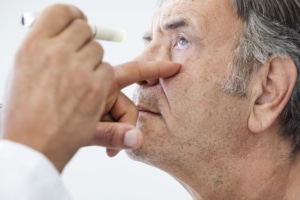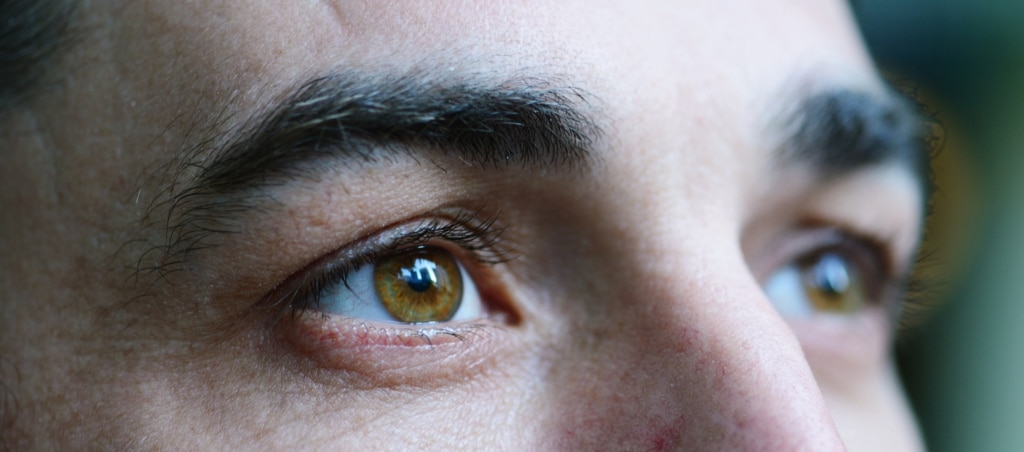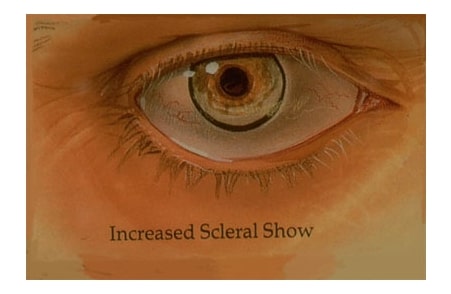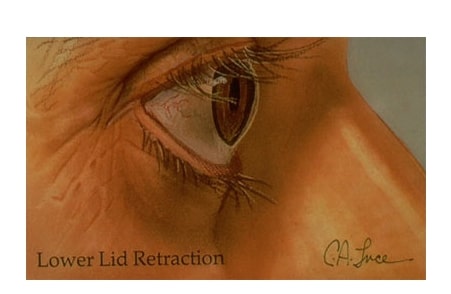Eyelid Scarring and Retraction
Damage to the eyelids can prevent them from working properly to protect and lubricate the eye. When scars or injuries pull the lower eyelid downward (or the upper eyelid upward), it is referred to as eyelid retraction. This change in eyelid position interferes with blinking, which can cause eye irritation, pain, blurry vision, tearing, and permanent damage to the cornea.
Eyelid retraction can also be caused by conditions such as thyroid eye disease or by age related changes.
Retraction can also be a result or unresolved problem after eyelid surgeries. Our doctors also perform revision eyelid surgery to enhance the outcome in patients who have undergone previous eyelid repair or cosmetic surgery elsewhere. Most patients with eyelid retraction are upset about their chronic dry eyes, tearing, blurry vision, and general discomfort. Many are also concerned about the poor appearance and facial deformity inherent in eyelid retraction, even if it is mild.
What Causes Eyelid Damage?
Damage to the eyelids can be caused by surgery on the eyelids or nearby parts of the face. Cosmetic and non-cosmetic eyelid or facial surgery as well as skin cancer (Mohs) reconstruction are common causes of eyelid retraction. Scarring from a traumatic injury (such as dog bite, car accident, or fistfight) can also lead to eyelid retraction. Due to the unique anatomy of the eyelid, repair can be a challenge. However, it is crucial that the injured person receives proper treatment to address cosmetic and ocular concerns. Our Denver doctors have extensive training in ophthalmic and oculoplastic surgery and have many years of clinical experience treating simple to complex cases of eyelid trauma.

What is Eyelid Scarring?
Eyelid or facial surgery or trauma can cause the eyelids to lose normal mobility and position. In some cases, this scarring may make it impossible to properly close the eye(s) so that drying, irritation, and infection can result. When the lower eyelid is affected, may notice that there is “too much white showing,” and the eye often alternates between feeling gritty and then watering excessively. Outpatient surgical repair can usually restore more normal appearance and function. Our doctors will perform a careful examination during your consultation to determine the exact details of the repair that will be required.
What is Eyelid Retraction?
Eyelid retraction is a term that describes an abnormally high position of the upper eyelids or unusually low position of the lower eyelids. Usually, the lids should rest just above or below the iris, the colored part of the eye.
Eyelid retraction may result from poor surgical healing, trauma, old age, and thyroid eye disease. The latter, also called Grave’s disease, is usually responsible for upper eyelid retraction, but may also cause lower lid retraction. Lower eyelid retraction is also a possible complication of cosmetic lower blepharoplasty. Genetics or some facial anatomy variants may also cause retraction of the lower eyelid, allowing too much sclera to show.
What Treatment Options Are Available for Eyelid Scarring/retraction?
Upper eyelid retraction surgery usually involves adjusting the levator muscle, which is the muscle primarily responsible for lifting the upper eyelid. Adjustment of this muscle allows the eyelid to close more completely over the ocular surface and hang at a more normal level when you are looking straight ahead. Depending on the cause of the upper eyelid retraction, it may be necessary to address scarring of the upper eyelid skin, which may require a skin graft.
Lower eyelid retraction surgery may be a bit more involved, depending on the condition of the skin and the degree of retraction. Gravity works against us in this case, and if the lower eyelid closing muscle (orbicularis oculi muscle) is weak or loose, it may be necessary to use several techniques at once. Lower eyelid position also has an outsized influence on the movement of the tears as they lubricate the eye and flow toward the outflow ducts near the nose. When possible, surgery is limited to the tightening and lifting of the lower lids with adjustment of the tendons at the outer corners that hold the eyelids in normal position. However, in some situations, a midface lift, facial reanimation, or tissue grafting may be necessary to achieve the most desirable outcome.
Patients whose eyelid retraction is related to bulging eyeballs, most commonly associated with thyroid eye disease, may also benefit from orbital decompression. This technique is performed as part of the complete rehabilitation of patients who need it, and before eyelid surgery so that we can observe how the eyelids respond when the eyes’ protrusion is reduced.

Are Non-surgical Options Available?
Initially, treatment for eyelid scarring and retraction may center around controlling the symptoms of eye exposure and dryness caused by poor ocular protection. Conventional approaches include eye drops and ointment, bandages, and other methods of comfort. While these strategies can manage symptoms, they cannot correct the problem causing them. Only surgical intervention can definitively correct the retraction.
Will Surgery for Eyelid Retraction Alter My Vision?
It is very rare for eyelid surgery to affect vision adversely. In most cases, vision improves as a result of adjusting the eyelids.
What is the Recovery From Eyelid Scarring/retraction Treatment?
To achieve optimal results from eyelid surgery, it is necessary to assess not only the tissue that has been damaged or is otherwise abnormal, but also to evaluate the eyeball, tear ducts, and orbital bones as a complete and interconnected picture. Our doctors understand the complex nature of the eye area. They have obtained board-certification and are contributing fellows of the American Academy of Ophthalmology and the American Society of Ophthalmic Plastic and Reconstructive Surgery.
Corrective eyelid surgery may be conducted in an outpatient setting, so patients usually return home the day of their procedure. Commonly, pain is so minimal that patients feel close to normal the day after their surgery, except for typical swelling and bruising. Any discomfort that does occur can be managed with oral medication. Depending on the exact procedure, the eye may be covered with a bandage for a few days, partially closed temporarily, and patients should expect to avoid strenuous exercise for the first week or two. Most of the signs of recent surgery typically disappear within two weeks.
A post-operative follow-up is usually scheduled a week to ten days after surgery, at which point stitches will be removed. After this visit, many patients may be able to resume wearing makeup and contact lenses. More strenuous activity such as heavy lifting or intense aerobics can resume a few weeks after surgery.
Read What Our Patients Are Saying!
"Dr. Fante is incredibly knowledgable and skilled. He and his staff are friendly, warm , and professional. I received excellent care, and my results are fantastic. I would recommend him to anyone who wants the best off the best!"
Click here to read more reviews.
Schedule a Denver Eyelid Scarring and Retraction Consultation
If you are experiencing symptoms of eyelid scarring or retraction, contact our Denver office today! Call 303-839-1616 to schedule a consultation with oculofacial plastic surgeons, Dr. Alexandra Levitt, or Dr. Robert Fante.
To learn about Meibomian Gland Dysfunction, click here.
For tips and prevention on Dry Eye Disease from The American Academy of Ophthalmology, click here.




